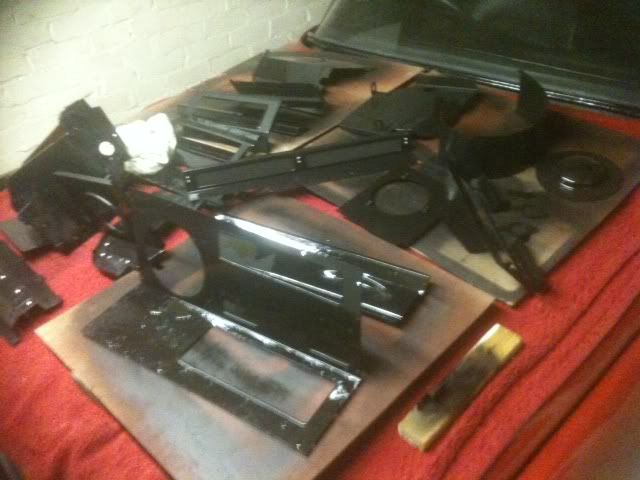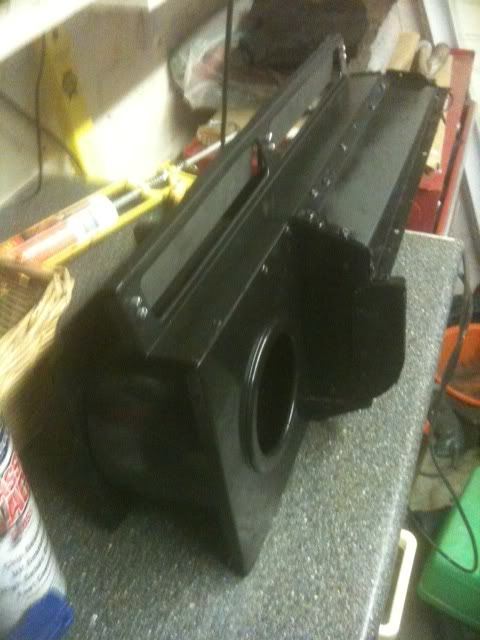Hoping to get my P6 MOT'd and back on the road for Easter so it can enjoy an autobox rebuild, I have a few things left to do. One of these is the rebuild of the heater box. I plan to renew the foam sealing strips, get the matrix rebuilt and take apart the fan motor, clean, re-grease bearing, clean commutator and change brushes if required. I am getting thoroughly cheesed off with being frozen in winter by a lukewarm dribble of air and then roasted alive in summer when warmish air bleeds through into the interior. :evil:
I have removed all 4 bolts holding the unit to the bulkhead, removed the heater hoses and disconnected the air blending/temperature control forks. I have yet to disconnect the fan speed/flap open&shut switch - looking beneath the dash the switch appears to be bolted through a link which runs parallel to the bulkhead. If I disconnect the switch by the bolt, how does the parallel link clear the bulkhead when you lift the unit free?
The workshop manual doesn't explain this in any detail - could anyone here please advise?
Many thanks.
I have removed all 4 bolts holding the unit to the bulkhead, removed the heater hoses and disconnected the air blending/temperature control forks. I have yet to disconnect the fan speed/flap open&shut switch - looking beneath the dash the switch appears to be bolted through a link which runs parallel to the bulkhead. If I disconnect the switch by the bolt, how does the parallel link clear the bulkhead when you lift the unit free?
The workshop manual doesn't explain this in any detail - could anyone here please advise?
Many thanks.





